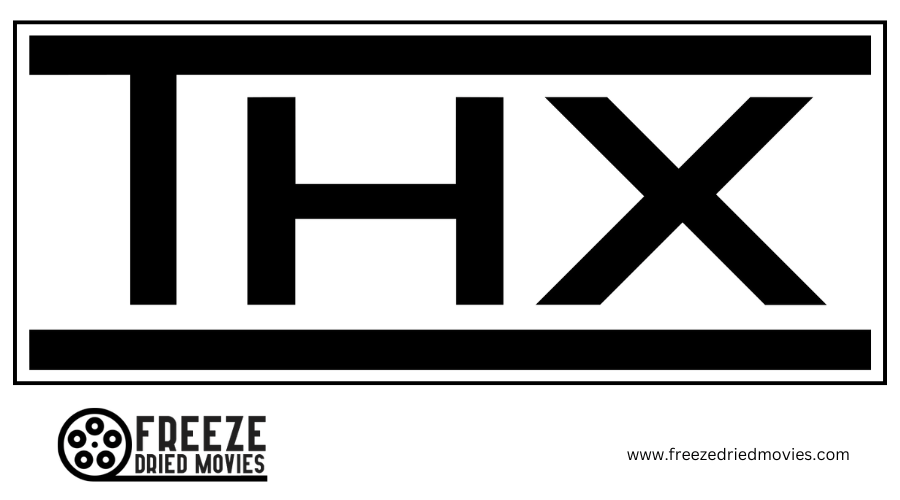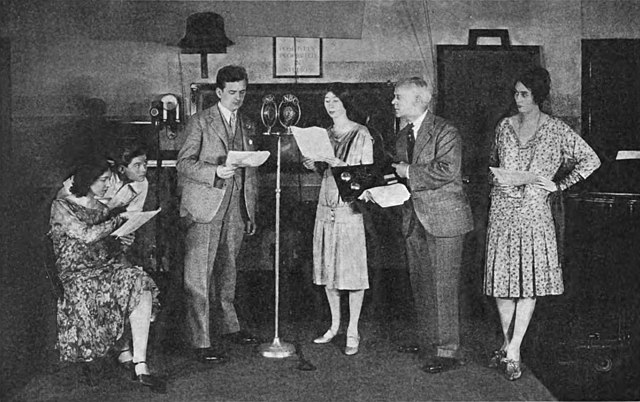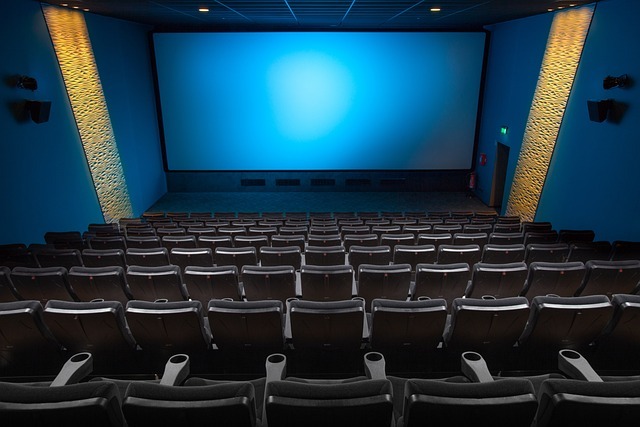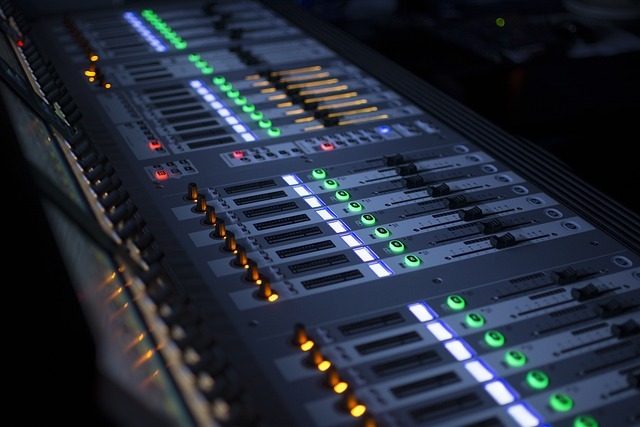A movie’s sound can pull you into its world, making you jump at a sudden crash or feel the tension in a whispered conversation. Advances in movie sound technology, from the introduction of THX Theater Standardization to the immersive 10.2 surround sound systems, have transformed the way you experience films. These innovations not only enhance the realism of what you’re watching but also deepen your emotional connection to the story. As the industry continues to evolve with AI, VR, and more sophisticated sound mixing tools, imagine what future movies will sound like. Let’s explore what’s on the horizon for movie sound technology, and why it matters more than you might think.
Key Takeaways
- THX Theater Standardization has significantly improved sound quality in films.
- The evolution from 5.1 to 10.2 surround sound systems enhances immersive audio experiences.
- Foley artistry plays a crucial role in creating realistic sounds in post-production.
- Innovations like Smyth Brothers’ coherent acoustics for DTS sound calibration set new standards in movie audio quality.
- Assistive Listening Devices in cinemas aim to enhance movie-watching experiences for all, ensuring accessibility.
The Evolution of Sound Design
Sound design in movies has transformed from simple audio tracks to advanced techniques that greatly enhance your viewing experience. Remember the days when movie audio was just background music and dialogue? Those days are long gone. Now, thanks to innovations like THX Theater Standardization, the quality of sound in your favorite films has skyrocketed. Improved audio isn’t just about turning up the volume; it’s about clarity, depth, and realism that pulls you into the story.
Innovations haven’t stopped there. The progression from 5.1 to 10.2 sound systems means you’re not just watching a movie; you’re enveloped in it. Every whisper, footstep, and explosion feels like it’s happening around you, thanks to these sophisticated setups. And with the Smyth Brothers’ coherent acoustics for DTS sound, the calibration of sound quality has reached new heights. This blend of tradition and cutting-edge technology guarantees that movie soundscapes are more immersive and realistic than ever.
In short, improved audio in movies isn’t just an upgrade; it’s a revolution. Next time you’re engrossed in a film, remember: it’s not just what you see, but what you hear that turns a good movie into a great experience.
Breakthroughs in Surround Sound
You’ll find that breakthroughs in surround sound technology have fundamentally altered how we immerse ourselves in the cinematic world. Remember when THX Theater Standardization alongside 5.1 Surround Sound first hit the scene? They revolutionized film audio, crafting a more immersive experience that made you feel right in the middle of the action. But it didn’t stop there. The leap from 5.1 to 10.2 systems pushed the envelope even further, enhancing the depth and realism of soundscapes in a way that simply wasn’t possible before.
With 10.2 systems, fill speakers play a pivotal role, enveloping you in a rich audio environment that’s as close to real life as it gets. The Smyth Brothers took it up a notch with their coherent acoustics for DTS sound systems, setting new standards in sound calibration. This secures the audio you hear is not just precise but of excellent quality.
The evolution of surround sound technology has reshaped how you experience movies. Today, you’re not just watching a film; you’re part of it. The soundscapes are more dynamic, engaging, and unbelievably realistic, thanks to these groundbreaking advancements in surround sound.
The Magic of Foley Artistry
Have you ever wondered how movies make every footstep, door slam, and rustling leaf sound so real? The secret lies in the magic of Foley artistry. This skill involves recreating realistic sounds in post-production, adding depth and authenticity to scenes. When original field recordings miss specific sounds or capture unwanted background noises, Foley artists step in. They mask these imperfections and fill in the gaps, ensuring that every sound you hear fits perfectly with the action on screen.
Foley artistry is not just about replacing sounds; it’s about enhancing the entire auditory experience of a film. Artists use an array of props and surfaces to mimic the sounds of different actions and environments, from the soft tread of sneakers on pavement to the sharp clack of heels on wood. This meticulous process transforms the way scenes are perceived, making them more vivid and real.
Next time you’re engrossed in a movie, remember the unsung heroes of Foley artistry. Their craft is vital in bringing films to life, ensuring that what you hear is just as compelling as what you see.
Composing the Film Score
You’re now entering the world of film score composition, where crafting emotional impact, harnessing technology, and collaborating with directors come into play. It’s where composers like John Williams shape scenes into unforgettable experiences. Let’s explore how they do it, enhancing every frame with sound.
Crafting Emotional Impact
Crafting the emotional impact through a film score involves a meticulous process, where composers like Leonard Bernstein and John Williams breathe life into the cinematic narrative, ensuring every chord strikes a chord with the audience. These scores aren’t just background music; they’re the soul of the film, amplifying every emotion and turning scenes into unforgettable moments.
| Composer | Iconic Score |
|---|---|
| Leonard Bernstein | West Side Story |
| John Williams | Star Wars |
| Hans Zimmer | Inception |
A well-crafted film score pulls you deeper, making you laugh, cry, or sit on the edge of your seat. It’s an art that makes movies more than just visual tales; they become experiences that resonate with audiences long after the credits roll.
Technology in Composition
In the domain of film scoring, technological advancements have revolutionized how composers create and integrate music into movies. Composing the film score involves crafting music that not only heightens emotions and tension but also foreshadows events and enhances storytelling. Icons like Leonard Bernstein and John Williams have set high standards with their unforgettable scores. Historically, the film score is composed and conducted post-filming, ensuring a seamless blend with the visuals. This art form plays a pivotal role in the cinematic experience, engaging audiences emotionally and enriching the narrative. As technology evolves, composers now have unprecedented tools at their disposal, allowing for more dynamic and immersive scores that continue to push the boundaries of what’s possible in film music.
Collaborating With Directors
How do composers guarantee that their music aligns perfectly with a director’s vision for a film? It’s all about collaborating with directors. Composing the film score isn’t just about crafting melodies; it’s about enhancing the storytelling by tapping into the emotions and tension within the movie. Legends like John Williams and Leonard Bernstein mastered this art, creating iconic scores that resonate with audiences worldwide. They knew the importance of working closely with directors, ensuring the music foreshadowed events, emphasized key moments, and evoked the intended moods. This essential collaboration happens once filming is complete, allowing composers to sync their music with the visual narrative precisely, making the film score an indispensable tool in shaping the movie’s atmosphere and emotional impact.
Innovations in Sound Effects
Sound effects, evolving greatly over the years, now play a pivotal role in bringing movies to life by enhancing realism and immersion. These auditory elements are not just background noise; they’re a form of art that complements the visual storytelling, making the unreal seem real and the fictional, factual. Here’s how they’ve transformed the cinematic soundscape:
- Realism Amplified: Sound effects, recorded late in the filmmaking process, guarantee that every explosion, whisper, and footstep enhances the impact of key moments, making you feel like you’re right there in the scene.
- Creative Boundaries Pushed: With the rise of innovative techniques, sound designers are no longer limited by the sounds of the real world. They’re creating entirely new auditory experiences that enrich the story.
- Essential for Big Budgets: In big-budget films, sound effects are vital. They transform visuals into a complete, immersive experience, ensuring that every dollar spent is felt and heard.
- Transforming Scenes: Through the use of innovative sound effects, what you see on screen goes from simply being watched to being believed.
Sound effects aren’t just heard; they’re felt, making the audio description of scenes as critical as the visual spectacle itself.
Enhancing Accessibility in Theaters
While sound effects amplify the cinematic experience, theaters have also made strides in ensuring everyone can enjoy films to their fullest through advanced accessibility features. You’ve probably noticed, or maybe you haven’t, but the next time you’re at a movie theater, take a look around. Theaters like AMC, Regal Cinemas, and Landmark Theaters are leading the charge, offering cutting-edge assistive listening devices. These aren’t your average sound boosters. We’re talking about technology that makes movies accessible to those with hearing impairments.
Thanks to the Americans with Disabilities Act, it’s not just a courtesy; it’s the law. Theaters must provide devices like open captions, closed captions, and personal FM systems. But some go even further, employing hearing loops, wireless audio description, and infrared captioning devices. Ever heard of MobileConnect? It’s one of the mobile apps that’s changing the game by transmitting audio signals directly to your device, making dialogue clearer.
This push for compliance and the desire to offer a seamless movie-watching experience means more people than ever can enjoy movies, just like everyone else. Next time you’re catching a flick, remember, it’s not just about seeing the film. It’s about hearing it, too.
Assistive Listening Devices Explored
You’ve seen the range of assistive listening devices theaters offer, from open captions to personal FM systems. These technologies not only comply with the Americans with Disabilities Act but also greatly enhance the movie-going experience for individuals with hearing loss. Now, let’s explore the types of devices available and how they’re making cinemas more accessible for everyone.
Types of Assistive Devices
Exploring the world of assistive devices reveals a variety of technologies designed to enhance movie-going experiences for individuals with hearing loss. These innovations aim to make every dialogue, sound effect, and musical score accessible and enjoyable for everyone.
- Open Captions: Like subtitles, they display dialogue and sound cues directly on the screen, benefiting everyone in the audience.
- Closed Captions on Personal Devices: Through devices or apps, you receive captions privately, tailored to your viewing experience.
- Personal FM Systems: These gadgets cut through background noise, making every word crisp and clear.
- Infrared Systems and Hearing Loops: They wirelessly transmit audio directly to your hearing aid or headphones, ensuring you don’t miss a beat of the action or the subtleties of the soundtrack.
With theaters like AMC, Regal, and Landmark leading the charge, accessing these tools is becoming easier, turning every movie outing into an inclusive event.
Enhancing Accessibility in Cinemas
Movie theaters are now equipped with advanced assistive listening devices, ensuring everyone can fully enjoy the cinematic experience. Thanks to the Americans with Disabilities Act, you’re guaranteed access to technology like open captions, personal FM systems, and more. Giants like AMC Theaters, Regal Cinemas, and Landmark Theaters are at the forefront, offering a variety of options to cater to your needs. Whether it’s through hearing aids, innovative mobile apps, or cutting-edge infrared technology, these assistive listening devices are changing the game. They’re not just about compliance with regulations; they aim to enhance accessibility, provide captions, and greatly improve your movie-watching experience. So next time you’re at the movies, you won’t miss a beat.
Future Trends in Audio Technology
As we explore the future, immersive sound technology stands at the forefront of transforming film experiences. You’re about to witness a revolution that’ll make every movie you watch more enthralling than ever. Here’s what’s on the horizon:
- Advanced Algorithms and Speakers: These aren’t just any speakers or algorithms. We’re talking about cutting-edge tech designed to wrap sound around you, making you feel like you’re inside the movie.
- AI and Machine Learning: Imagine sound so perfectly tuned it feels tailor-made for your ears. Thanks to AI, that’s becoming a reality. These tools are reshaping how sound is captured, ensuring every whisper and explosion is heard in crystal clear detail.
- Virtual and Augmented Reality: Ready to step into the movie? VR and AR are opening doors to audio storytelling that’s more engaging. You won’t just watch; you’ll feel like you’re part of the narrative.
- Sound Mixing Tools and Plugins: Filmmakers are getting an unprecedented level of control over audio, allowing them to fine-tune every sound to their vision, making every scene more powerful.
Get ready. The future of movie sound is about to amplify your film-watching experience like never before.
Frequently Asked Questions
What Is the New Sound Technology in Film?
The new sound technology in film you’re asking about is Dolby Atmos. It immerses you by adding overhead speakers, letting filmmakers place sounds all around, making movie scenes feel incredibly real and engaging.
Who Perfected the Technology for Movie Sound?
It was James Foley. He mastered Foley audio techniques, adding real-life sounds like footsteps and door creaks to films, making scenes more authentic and immersive.
What Is the Quote About Sound in Movies?
The quote about sound in movies you’re asking about is ‘Hearing is believing.’ It emphasizes how vital sound is for making movies feel real and engaging. It’s all about immersing you deeper into the story.
What Part Does Hearing Play in the Emotional Experience of Seeing a Good Movie?
Hearing deeply impacts your emotional experience when watching a movie. It enhances immersion, making you feel closer to the characters and story. Sound effects, dialogue, and music together craft the film’s mood, elevating your engagement.
Conclusion
As you’ve seen, the journey of movie sound technology is nothing short of magical. From the early whispers of sound design to the thunderous roars of today’s surround sound, every innovation has made your movie experiences more immersive. Foley artistry, dynamic scores, and crystal-clear sound effects all play their part in bringing stories to life. With assistive devices breaking barriers and future tech promising even more wonders, you’re right at the heart of a revolution. Hearing, truly, is believing.





